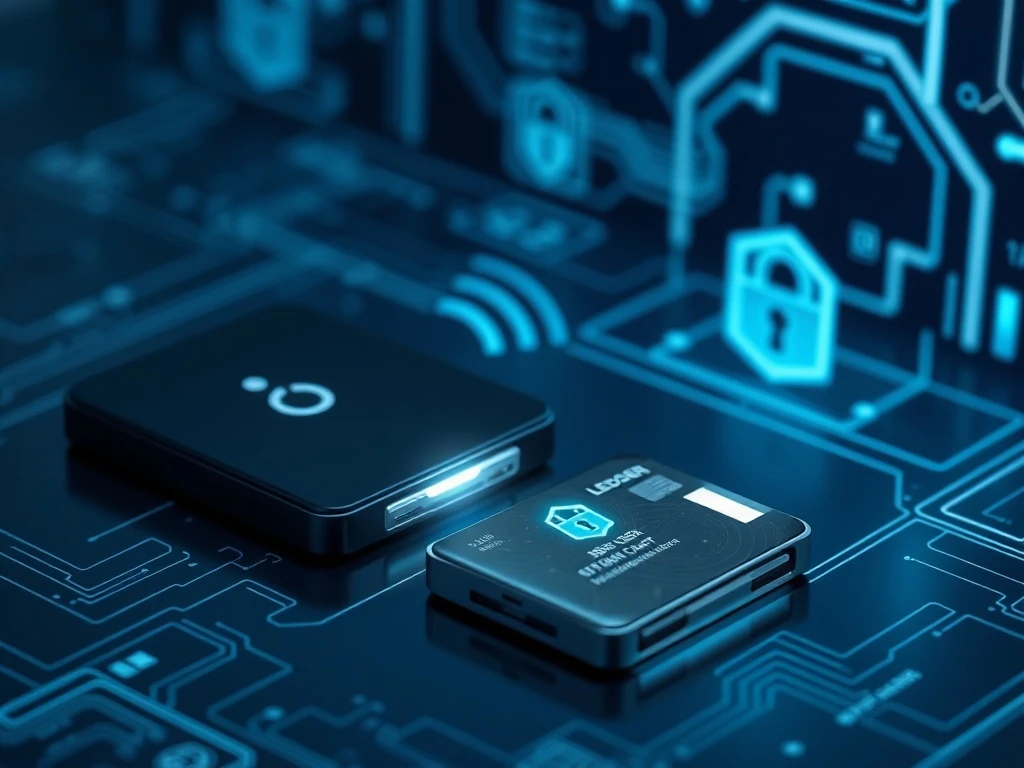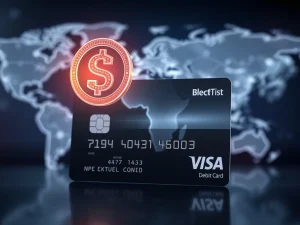Ledger Unveils Revolutionary Offline Private Key Recovery for Enhanced Hardware Wallet Security

In the rapidly evolving world of cryptocurrency, the mantra ‘not your keys, not your crypto’ rings truer than ever. Yet, the responsibility of managing private keys can be daunting, often leading users to choose convenience over absolute control. This delicate balance is precisely where innovation is most needed, and Ledger, a pioneer in secure hardware wallet solutions, is stepping up. They’ve just introduced a groundbreaking new tool designed to make self-custody both more secure and user-friendly: the Ledger Recovery Key. This isn’t just another product; it’s a significant leap towards truly empowering crypto owners with robust offline recovery capabilities.
Unpacking the Ledger Recovery Key: A True Offline Recovery Solution
For years, Ledger has been synonymous with top-tier security for digital assets. Their latest offering, the Ledger Recovery Key, continues this tradition but with a crucial distinction: it’s designed to be entirely offline. Unlike previous recovery solutions, this new physical tool ensures your private keys remain isolated from any internet connection, addressing a key concern for many privacy-conscious users.
Here’s what sets the Ledger Recovery Key apart:
- Always Offline: The primary differentiator. Your recovery data is stored on a physical smart card with NFC connectivity, never touching cloud services.
- No Identification Required: A stark contrast to some other recovery services, the Ledger Recovery Key doesn’t demand personal data or identity verification, enhancing user privacy.
- Physical Security: Protected by its own PIN, the smart card itself is built with Secure Element technology, the same robust security layer found in Ledger hardware wallets.
- Exclusive Compatibility: Initially supporting Ledger Flex and Ledger Stax wallets, it integrates seamlessly via secure NFC wireless channels, ensuring direct communication without intermediaries.
This commitment to an offline-first approach underscores Ledger’s understanding of the community’s demand for ultimate control and privacy over their digital wealth.
How Does This Innovative Private Key Recovery System Work?
The simplicity of the Ledger Recovery Key belies its sophisticated underlying technology. Imagine regaining access to your crypto assets with just a tap and a PIN. That’s precisely what this system offers.
The process is straightforward:
- Physical Smart Card Storage: Your private keys are securely stored on a dedicated NFC-enabled smart card.
- NFC Connection: When recovery is needed, you simply tap the smart card to your compatible Ledger device (Flex or Stax).
- PIN Protection: Access to the keys on the card is secured by a unique PIN, adding an extra layer of protection even if the card falls into the wrong hands.
- Direct & Secure: The connection between the card and your Ledger device is direct and encrypted via NFC, eliminating potential attack vectors associated with online services.
This design philosophy emphasizes user-friendliness without compromising the core tenets of security. For anyone who has ever worried about losing their seed phrase or the complexity of traditional backup methods, this new approach to private key recovery offers a compelling alternative.
Navigating the World of Self-Custody: Why This Matters
The promise of cryptocurrency lies in self-custody – the ability to ‘be your own bank’ and have sole control over your digital assets. However, this power comes with significant responsibility. The loss or theft of a private key can mean permanent loss of funds, a risk that has deterred many potential users from embracing self-custodial solutions.
Historically, solutions for this challenge have ranged from:
- Physical Backups: Writing down seed phrases on paper, or storing them on fire-proof metal plates. While robust, these are still susceptible to physical loss or discovery.
- Shamir Backup: Splitting a seed phrase into multiple parts, requiring a certain number of parts to reconstruct the whole. More secure but also more complex to manage.
- Cloud-Based Recovery: Services like Ledger Recover (Ledger’s previously launched solution) store encrypted fragments of recovery phrases in cloud-based hardware security modules. While convenient, they introduce a reliance on third parties and online services, which can be a point of contention for maximalists.
The Ledger Recovery Key directly addresses the usability gap in self-custody without compromising the fundamental principle of offline security. It offers a tangible, accessible, and secure method for users to regain access to their funds, making self-custody less intimidating and more practical for a wider audience.
Ledger’s Unwavering Commitment to Transparency and Trust
A key factor in the crypto community’s trust is transparency, especially concerning security tools. Ledger has taken significant steps to ensure the Ledger Recovery Key meets the highest standards of openness and scrutiny.
Key transparency initiatives include:
- Open-Sourced Application Code: The code for the Ledger Recovery Key’s application is publicly available on GitHub, allowing anyone to inspect and verify its integrity.
- Dedicated White Paper: A comprehensive white paper details the technical specifications, security architecture, and operational principles of the tool.
- Rigorous Internal Audits: Ledger’s own white hat hacker team, Donjon, conducts extensive internal security testing to identify and rectify vulnerabilities.
- Independent External Audits: The tool has undergone scrutiny by reputable third-party cybersecurity firms, including Synacktiv, ensuring an unbiased assessment of its security posture.
Charles Guillemet, Ledger’s Chief Technology Officer, expressed confidence in the product, stating, “We’ve received extremely positive feedback from security researchers and industry leaders, and we’re excited to reveal it to the world for even more feedback ahead of its launch soon.” This proactive approach to public review and third-party validation reinforces Ledger’s commitment to building secure and trustworthy solutions.
The Evolution of the Hardware Wallet Ecosystem
The introduction of the Ledger Recovery Key signifies an important evolution within the hardware wallet landscape. It highlights a maturing industry that is actively seeking to balance the core tenets of decentralization and security with the practical needs of everyday users.
It’s worth noting that this isn’t Ledger’s first foray into recovery solutions. In 2023, they launched Ledger Recover, a paid cloud-based service that, despite initial community backlash over third-party reliance, has continued to operate and grow. The new Ledger Recovery Key offers a distinct, offline alternative, providing users with more choice in how they manage their backup strategy. This diversification of recovery options demonstrates Ledger’s responsiveness to user feedback and their dedication to serving a broad spectrum of security preferences.
The ongoing innovation in hardware wallet technology, from enhanced device security to more user-friendly recovery mechanisms, is crucial for the mainstream adoption of cryptocurrencies. As more individuals and institutions enter the crypto space, robust and reliable self-custody tools become indispensable.
Benefits and Considerations for Users
The Ledger Recovery Key presents a compelling solution, but like any security tool, understanding its benefits and limitations is key:
Key Benefits:
- Enhanced Security: Truly offline storage means no internet-related vulnerabilities for your recovery data.
- Privacy-Centric: No identity verification or personal data collection, aligning with crypto’s ethos of privacy.
- User-Friendly Recovery: Simple tap-and-PIN mechanism simplifies what can often be a complex process.
- Audited & Open-Source: Transparency and external validation build trust and allow for community scrutiny.
- Physical Control: You hold the physical key, providing a tangible sense of ownership and security.
Important Considerations:
- Physical Loss/Theft: While PIN-protected, the smart card itself is a physical item that could be lost or stolen. Secure physical storage of the card is paramount.
- Compatibility: Currently limited to Ledger Flex and Ledger Stax wallets, meaning users of other Ledger models would need to upgrade or continue using alternative backup methods.
- User Responsibility: The ultimate security still rests on the user’s ability to properly store and manage their physical recovery key and PIN.
The Ledger Recovery Key is a powerful addition to the self-custody toolkit, offering a robust, private, and user-friendly path to regaining access to digital assets. It represents a thoughtful response to the challenges of secure crypto management, reinforcing Ledger’s position at the forefront of hardware wallet innovation.
Conclusion: A New Era for Secure Self-Custody
The launch of the Ledger Recovery Key marks a significant milestone in the journey towards making secure self-custody accessible to everyone. By offering an entirely offline, privacy-focused, and user-friendly solution for private key recovery, Ledger is not just introducing a new product; it’s reinforcing the fundamental principles of decentralization and individual financial sovereignty. This innovative hardware wallet accessory addresses critical pain points for crypto users, providing a robust safety net without compromising the core tenets of security and privacy. As the digital asset landscape continues to mature, solutions like the Ledger Recovery Key will be instrumental in fostering greater adoption and confidence in the power of true ownership.









